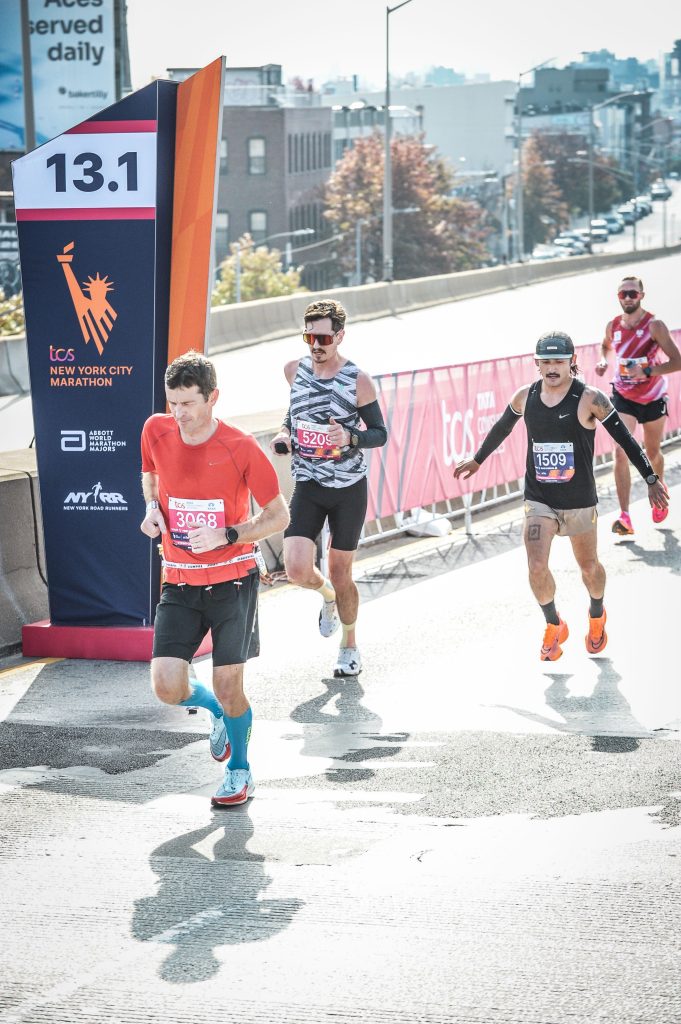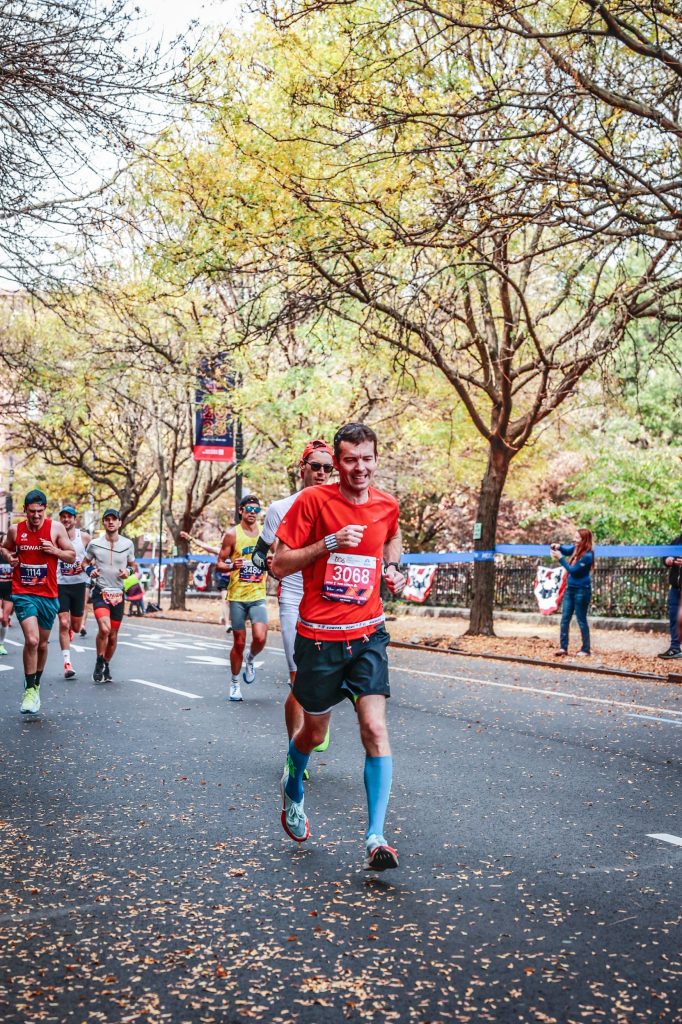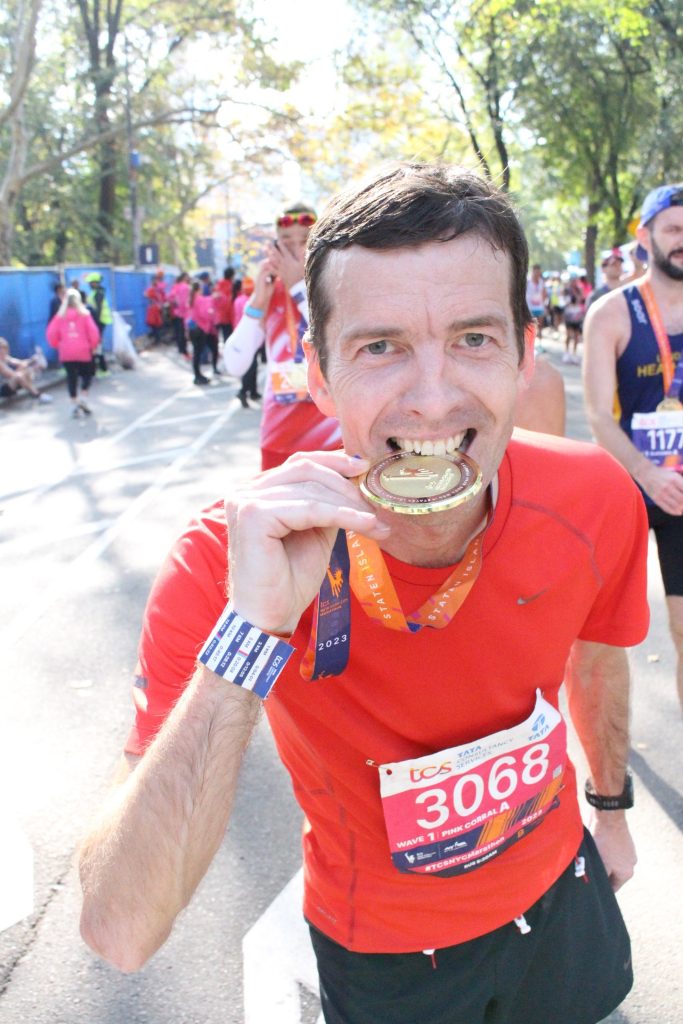Managing the business is like running a marathon

Our people out of office – Ivar Sikk
We have the pleasure of discussing the intriguing parallels between running a marathon and the challenges faced by a CEO in managing a company. Joining us is a distinguished runner who recently completed the 2023 New York Marathon with an impressive time of 2:54:35. CEO of Bauroc, Ivar Sikk has over 20 years of experience in the company. In 2003 he started as CFO of Estonian company and now managing the biggest producer of Autoclaved Aerated Concrete in Northern Europe.
Giving the demanding nature of your work as CFO, why and how do you find time for such endurance event like marathon?
Balancing physical and mental health is important for a CEO’s overall well-being and effectiveness. Endurance running not only improves cardiovascular health but also serves as a powerful stress-reliever. Moreover, the meditative aspect of running provides valuable time for reflection, helping in decision-making and problem-solving.
Let’s explore the significance of strategic planning in both the marathon and the corporate world. Can you elaborate on how meticulous planning plays a crucial role in these endeavours?
Whether gearing up for a marathon or steering a company, strategic planning is fundamental. Before a marathon, runners meticulously design training schedules, nutrition plans, and pacing strategies to endure the race. Similarly, successful CEOs are adept at strategic planning. They set long-term goals, develop business strategies, and create comprehensive plans to guide their companies through various market conditions.
Endurance is a key factor in both running and managing a company. How do these aspects manifest in these contexts?
The marathon tests a runner’s physical endurance, requiring mental toughness to push through fatigue and moments of doubt. Similarly, CEOs face challenges that demand mental resilience and the ability to persevere through tough times, making critical decisions even in the face of uncertainty.
Adaptability seems crucial in dynamic situations. How do runners and CEOs showcase adaptability in their respective arenas?
Both runners and CEOs must be adaptable. Runners need to adjust to changing weather conditions, unexpected physical challenges, and variations in terrain during the race. Similarly, CEOs must adapt to a dynamic business environment, pivot strategies, and navigate unforeseen challenges, much like a runner adjusting their pace during a race.
Collaboration and teamwork are often associated with success. How do these factors contribute in both running and managing a company?
While running is typically an individual effort, many marathoners train with teams or running groups for support and motivation. Similarly, collaboration is vital for CEOs. Leading a successful company involves fostering teamwork, effective communication, and a cohesive company culture to ensure everyone is moving in the same direction.
Setting and achieving goals seem to be a common theme. How does this apply in both contexts?
Runners set intermediate goals and milestones during training to measure progress and stay motivated. Likewise, CEOs set short-term and long-term goals for their companies, breaking them down into achievable milestones to track progress and maintain momentum.
Risk management is a critical aspect. How does this manifest in both running a marathon and managing a company?
Runners must assess and manage the risk of injury during training and the race itself. Similarly, CEOs are responsible for identifying and mitigating business risks. This involves making calculated decisions, foreseeing potential challenges, and implementing strategies to minimize negative impacts.
Lastly, the pursuit of continuous improvement. How does this factor into both running and business leadership?
Successful runners constantly strive for improvement through refining their training techniques, adjusting nutrition plans, and learning from past races. Similarly, successful CEOs embrace a culture of continuous improvement within their organizations. They seek feedback, analyse performance metrics, and adapt strategies to stay ahead in the competitive business landscape.
By summarising these insightful comparisons, it’s clear that the marathon and the role of a CEO share a narrative of precise planning, resilience, adaptability, collaboration, goal setting, risk management, and a commitment to continuous improvement. Those who navigate these challenges emerge as true champions, whether on the marathon course or in the corporate world.



